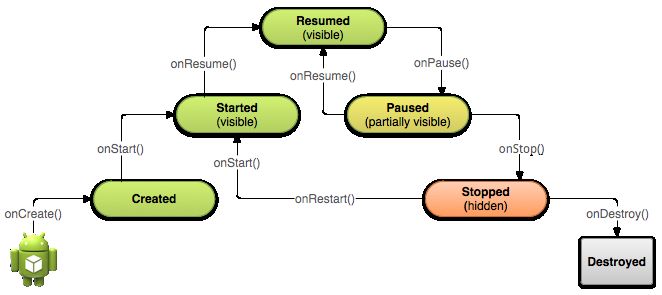android activity Understand the Lifecycle Callback
During the life of an activity, the system calls a core set of lifecycle methods in a sequence similar to a step pyramid. That is, each stage of the activity lifecycle is a separate step on the pyramid. As the system creates a new activity instance, each callback method moves the activity state one step toward the top. The top of the pyramid is the point at which the activity is running in the foreground and the user can interact with it.
As the user begins to leave the activity, the system calls other methods that move the activity state back down the pyramid in order to dismantle the activity. In some cases, the activity will move only part way down the pyramid and wait (such as when the user switches to another app), from which point the activity can move back to the top (if the user returns to the activity) and resume where the user left off.
As you'll learn in the following lessons, there are several situations in which an activity transitions between different states that are illustrated in figure 1. However, only three of these states can be static. That is, the activity can exist in one of only three states for an extended period of time:
Resumed
In this state, the activity is in the foreground and the user can interact with it. (Also sometimes referred to as the "running" state.)
Paused
In this state, the activity is partially obscured by another activity—the other activity that's in the foreground is semi-transparent or doesn't cover the entire screen. The paused activity does not receive user input and cannot execute any code.
Stopped
In this state, the activity is completely hidden and not visible to the user; it is considered to be in the background. While stopped, the activity instance and all its state information such as member variables is retained, but it cannot execute any code.
The other states (Created and Started) are transient and the system quickly moves from them to the next state by calling the next lifecycle callback method. That is, after the system calls onCreate(), it quickly calls onStart(), which is quickly followed by onResume().
That's it for the basic activity lifecycle. Now you'll start learning about some of the specific lifecycle behaviors.
//上面大概意思说activity存活的时候,会调用一大堆方法,就像图片显示那样,形成一个金三角
resumed 显示当前给用户看
Paused 透明状态
Stopped 在后台运行中
我是从最新的文档摘下来的,
